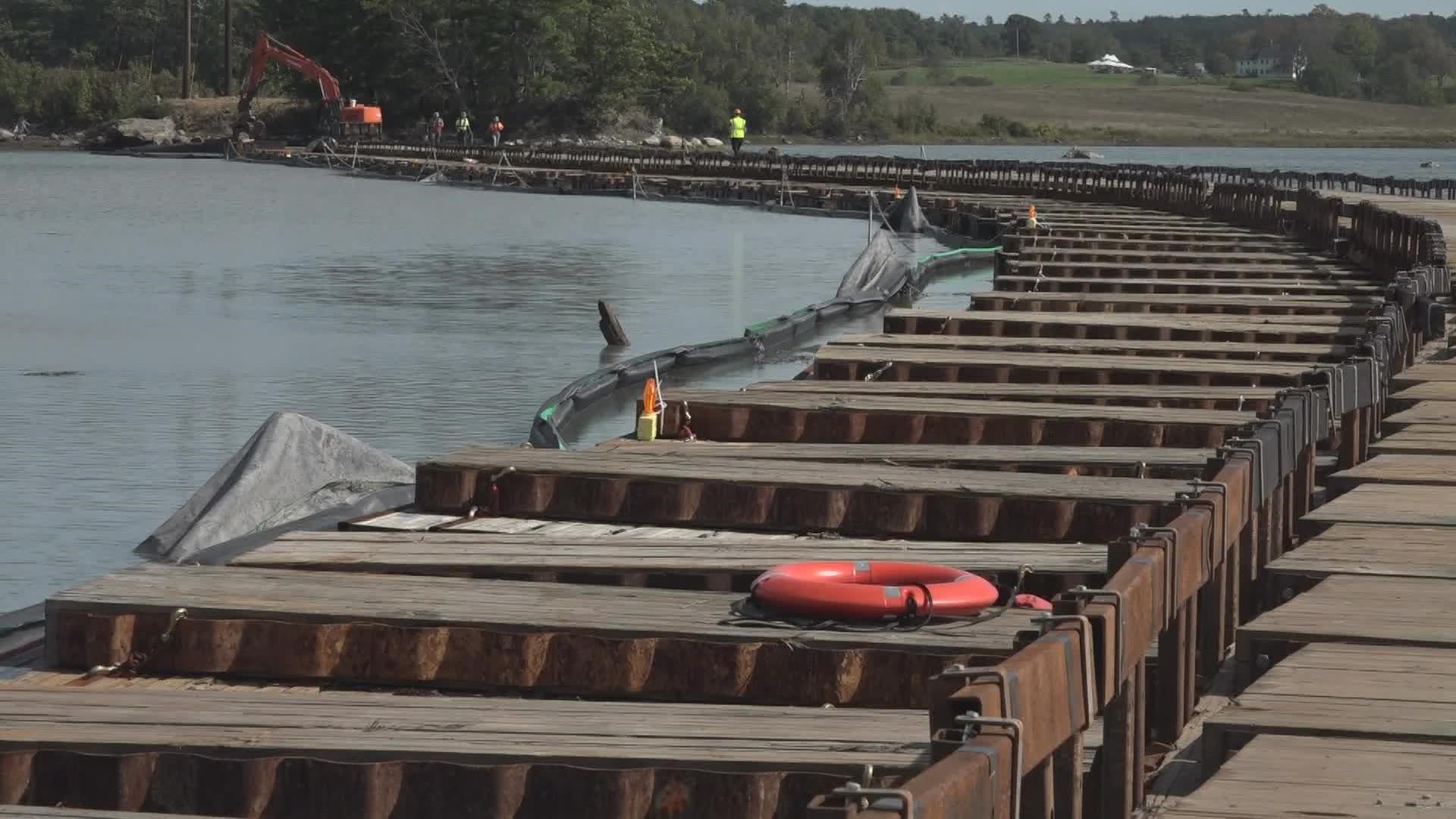NEWCASTLE, Maine — As the saying goes, sometimes the focus should be on the journey and not the destination. That cliché holds true for a temporary and unusual structure in the Great Salt Bay off the coast of Newcastle that's gaining attention from residents and visitors alike.
On Mills Road late Wednesday morning, construction crews were hard at work stacking floats. These materials were part of a project that has caught the eyes of people for weeks on end: a wooden "floating road" that stretches from the mainland to a small, hard-to-reach island in the bay.
Now, these crews are tearing down this "floating road" that took them three to four weeks to build in August. For the past few days, Central Maine Power has used this structure to bring crews and equipment out to the island to tend to an aging transmission line. The planning process for this project was years in the making, partly because of delays brought on by the pandemic. Now, its short-lived wonder is coming to an end.
"It has been quite a process and a good learning experience, and I'm glad that, so far, everything has gone very well on this project," Nicole Harbaugh, project manager with CMP, said.
Part of the project's success is credited to the collaboration of the large company and small town. CMP reached out to Newcastle about three years ago, asking about access to the island. The town's board of selectmen agreed to lease town-owned property to CMP as a staging ground, and CMP helped the town with a large road rebuild on Academy Hill in return.
One obstacle this initiative presented was whether it would be environmentally friendly. Joel Lind, the chairman of the Newcastle Board of Selectmen, said the state of the environment is an important part of the town's community and economy.
"There's a nutrient flush that occurs every time there's a tide change, and it feeds all of our oyster farms in the river," Lind said. "We have an alewife run that runs up through here every year."
Tending to the transmission line was also important, though. It's a radial line, which means if power were lost, it would disrupt life for about 4,300 people.
One of CMP's vendors recommended the "floating road" structure, which floats during high tide and rests on the bottom of the bay during low tide without disturbing the environment. The technology used actually stems from hardwood composites developed at the University of Maine. Now, the system is used across North America.
"The driving surface is 14 feet wide, but the actual structure below it is 40 feet wide," Jon Fiutak, the general manager of Emtek Matting Systems, which helped with the design of the "floating road", said. "It naturally distributes that load over a larger area."
The "floating road" is about 1,300 feet long and can hold up to 87,500 pounds. For those once unfamiliar with the technology, it's impressive -- especially since it's the first time CMP has used it for a project.
"Until you see it in actual use, you don't understand its full impact of what it can provide," Harbaugh said.
The timeline for this project moved a bit more quickly than expected. CMP has had to work around some issues like eagle and bat restrictions, but the bridge is expected to be down and restoration of the area should be completed by early October. Officials with the company said the project is expected to cost just over $4 million, and there could be similar undertakings in the future.

